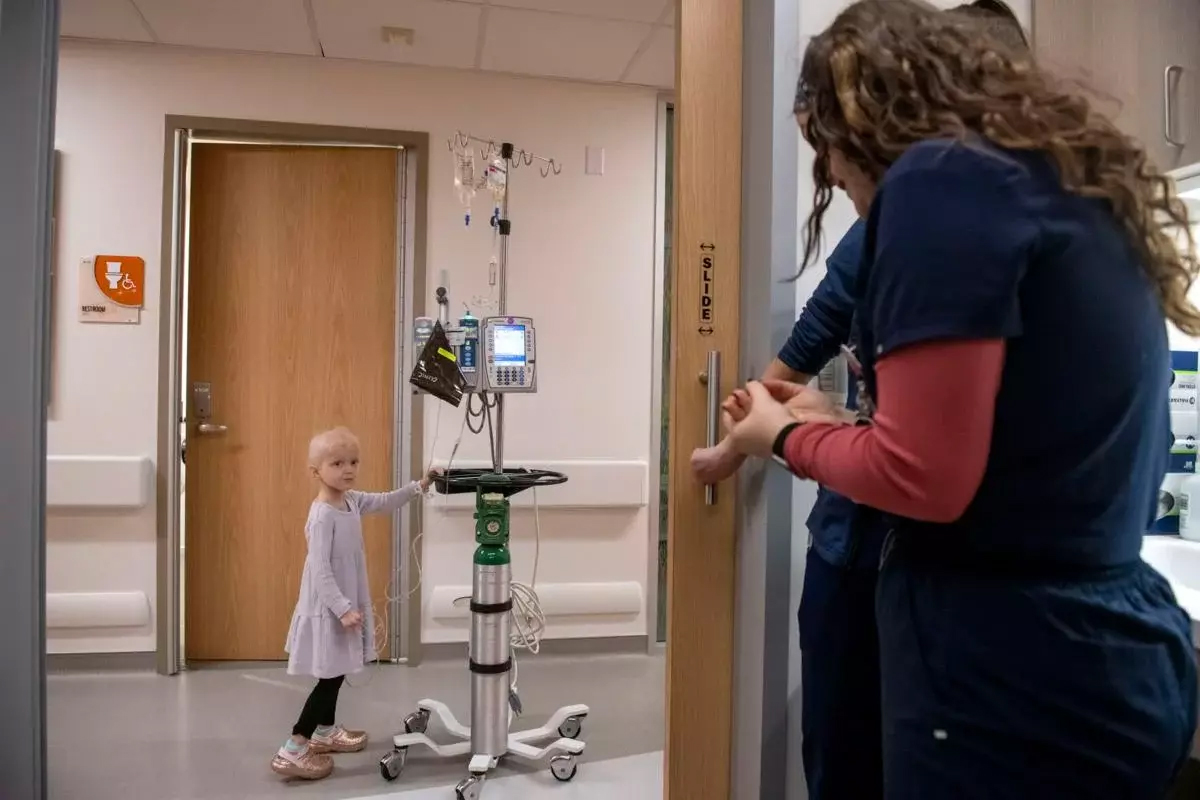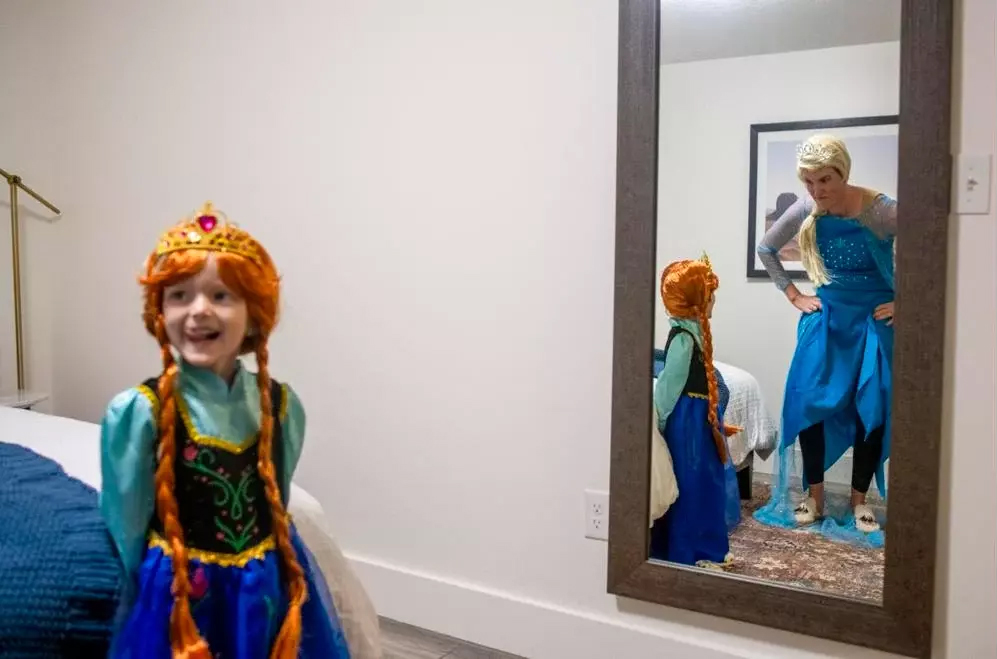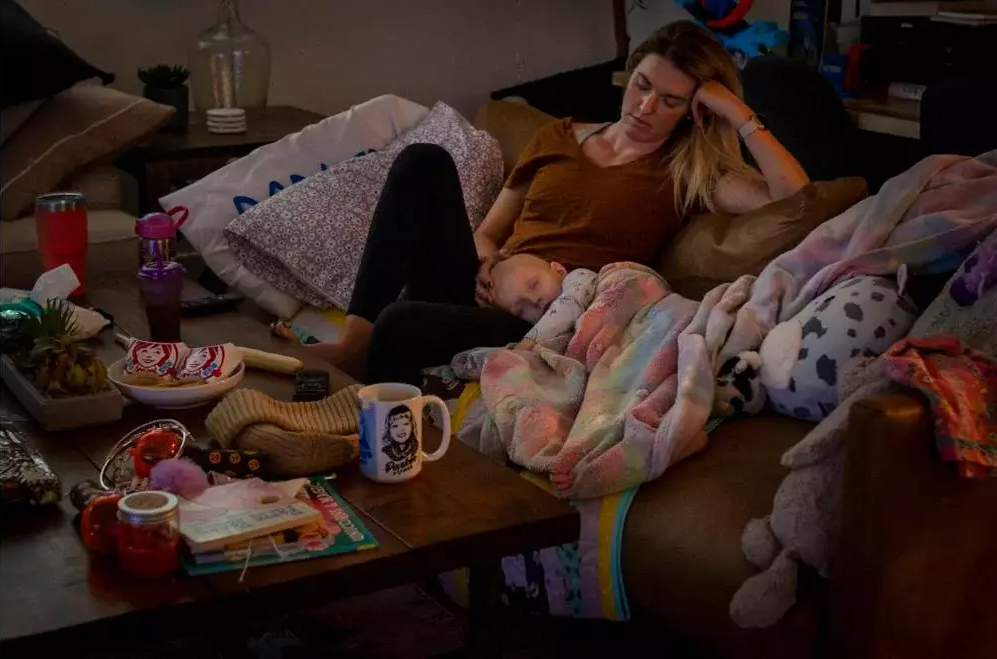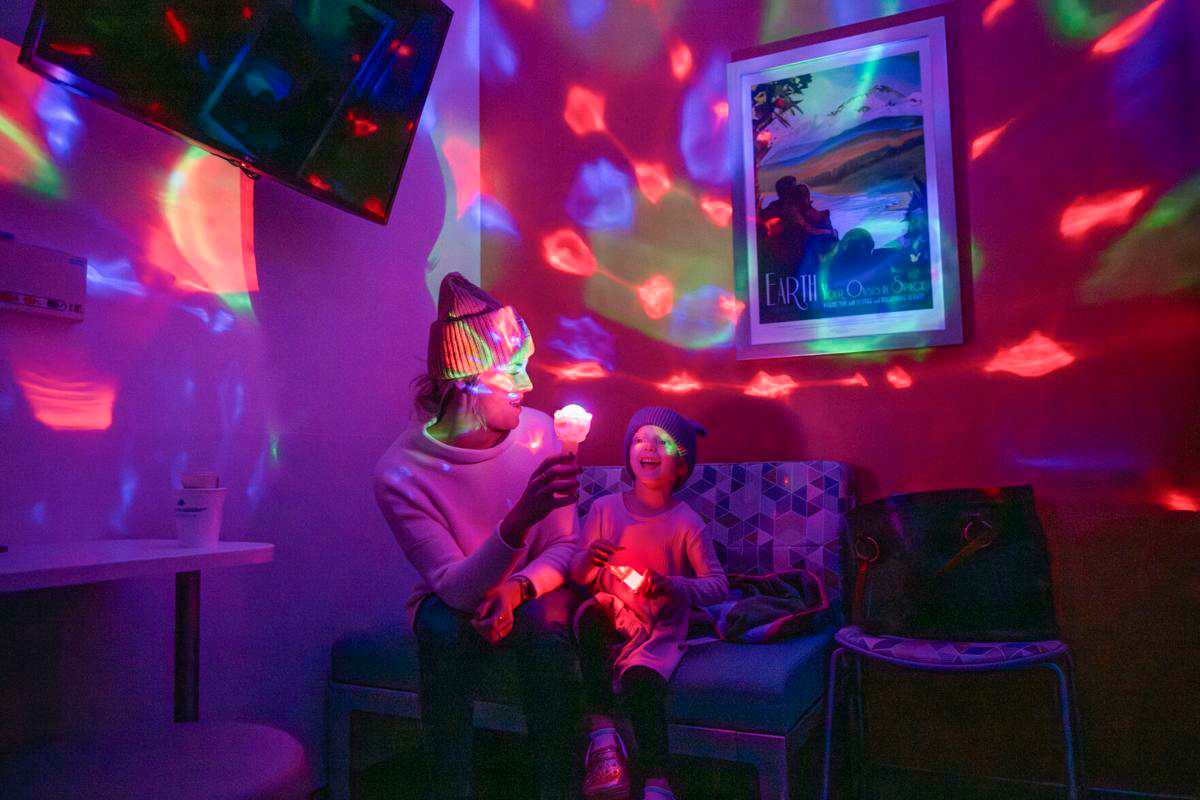
Read Time: 6 minutes
Parker reaches for the hand of her grandma, Penny Gaitan, while waiting for anti-nausea medication during her 10th week of chemotherapy treatment.

Corey Felton had taken his two daughters, Parker, 3, and Reese, 4, out on the family boat in a Rocky Mountain lake to enjoy the warm summer weather. Upon arriving home, Parker developed a fever seemingly out of nowhere. Then the Feltons noticed something else about Parker—a tennis ball-sized growth on her side.
“It didn’t hurt her at all and that’s what was so weird,” Corey recalls. “She had no symptoms and wasn’t in pain, but we went to the doctor. They suggested a follow-up and when we saw the staff crying, we knew something was wrong.”
Parker was life-flighted from her home in Jackson, Wyoming, to Salt Lake City. She was diagnosed with a Wilms tumor, the most common type of pediatric cancer of the kidneys.
“When the words first hit, your world is so chaotic that you don’t know what’s going on,” Corey says. “It wasn’t until a couple months later that it sunk in. You just want to get it over.”

Parker insists on pushing her “tower” through the halls of Intermountain Primary Children’s Hospital toward the playroom during a chemotherapy treatment.
Nearby, nurses cheer her on: “Keep pushing Parker. You can do it!”
Parker’s treatment consisted of three facets: surgery, chemotherapy, and radiation. “We had to remove the kidney that was infected with the tumor. We also needed to give Parker a regimen consisting of five different chemotherapy agents given over about 40 weeks. Finally, she also required radiation to the back of the abdomen and lungs, because she had a stage 4 metastatic Wilms tumor,” says Douglas Fair, MD, MS, FAAP, director of Huntsman Cancer Institute’s Adolescent and Young Adult (AYA) Cancer Care Program, and Parker’s oncologist.
“We see about six patients a year with this particular tumor. That may not sound like a lot, but pediatric cancer cases are very rare. We were able to treat Parker with the most advanced radiation therapy techniques thanks to Matthew Poppe, MD, who leads the Pediatric Radiation Oncology Program and Proton Radiation Program at Huntsman Cancer Institute.”
Proton therapy is a type of radiation therapy and Huntsman Cancer Institute is the only place it is offered in the Mountain West. Instead of photon or electron beams as used in other radiation treatment, this therapy uses protons. This allows more direct targeting of tumors, lower radiation exposure to nearby healthy tissue, and potentially, reduced short- and long-term side effects—which is a major benefit for young children in the future.
“Radiation was hard because she would cry for her mom and then pass out. I can’t watch Frozen anymore because they would play the music during the sessions to try and help. You have no idea if your kid is going to make it and your life is just flipped upside down,” Corey recalls.
Dressed as Anna and Elsa from the Disney movie Frozen, Parker and Nicole get into character for a Halloween party at Huntsman Cancer Institute.

Three months into ongoing treatment, Parker and her mom, Nicole, were living in a rented apartment in Salt Lake City to be close to Huntsman Cancer Institute. Parker and Nicole had dressed as Anna and Elsa from Disney’s Frozen for Halloween. But the magic dimmed as nausea, a cruel reminder of the previous day’s chemo treatment, struck.
The holiday festivities came to a screeching halt. Cartoons flickered on the television as Nicole held Parker close, tears welling in her eyes. This was a stark reminder of the journey their little princess faced, but they'd conquer this, together.
An hour after putting on their costumes, Nicole strokes Parker’s forehead as she drifts in and out of a nauseous sleep. “We’re crushed,” Nicole said through tears. “I just wanted her to have this one thing.”

“These are intense regimens,” Dr. Fair says. “Parker has dealt with the usual issues—fevers, infections, keeping weight—but she’s handled everything so well. Corey and Nicole are incredible parents and I know it’s been taxing on the family.”
“She’s done better than any adult would do. She knows she’s sick, but she’s so resilient,” adds Corey.
Parker’s extensive and intense therapy is scheduled to come to an end on March 28, 2024. The following day, if her scans are clean, her chemo port, which she has affectionately nicknamed “Tubie,” will be removed. After that, she will have a visit every three months to make sure things are proceeding as planned.
“Since Nicole has lived down here in Salt Lake City during the treatment, I know that created a new set of challenges for their family,” says Dr. Fair. Meanwhile, Corey has been back in Wyoming with Reese.
“Reese misses her mom and sister a lot, but starting kindergarten—we tried to keep her life as regular as possible here in Jackson,” says Corey. “Parker wants her mom around 24/7 and I know they’ve been doing a ton of crafts and painting together. But, Parker and Reese miss each other. They want to be kids again. This time has been taken from them and no one can give that back.”

Parker giggles as rainbows, flashing lights, and shapes dance across the walls of her chemotherapy room. The “disco chemo” atmosphere was facilitated by the hospital’s child life specialists, who use play to help children cope with the stresses accompanying health care.
Beyond the smiles for their daughters, Corey and Nicole confess the strain of their limbo. Nicole has talked about the weight of constant care, heavy on her shoulders. Each day can feel like a repetitive purgatory of constant waiting—for treatments, results, anything that offers a glimpse of the normal life they're fighting to reclaim. “You want to hear that this will work. You want answers,” Corey says. The team at Huntsman Cancer Institute has provided that hope.
“There’s an 89% chance that she is cured, that the cancer never comes back,” Fair says. “Even with a cure, Parker will have increased risk for significant ‘late effects’ from her cancer therapy, including, but not limited to, living with one kidney, colon cancer, skin cancer, breast cancer, cardiac disease, and infertility. Luckily, we have surveillance with the oncology team and also have our AYA Program, which most oncology programs don’t offer.”
“Our AYA Survivorship Program at Primary Children’s Hospital will perform appropriate screenings for these serious conditions, so we can catch them early when they are less likely to be life-threatening. We also have a nationally recognized oncofertility program that will allow her the best chance to build a family later in life. In addition to screening, our survivorship program also includes a social worker, who will help Parker and her family address any trauma.”




Parker celebrates the end of her chemotherapy treatment surrounded by friends, family, and her medical team at the bell ringing ceremony.
“It’s been such unbelievable care. Everyone is so personable,” Corey states. “I’ve been to the Mayo Clinic and some places on the East Coast and you’re not treated as well. The bedside manner, the compassion at Huntsman Cancer Institute just sets it apart.”
Still two weeks until her last therapy treatment, Parker went on a 2 1/2-mile walk with her mom, a sure sign of improvement. With Parker’s fourth birthday quickly approaching in May, the Feltons hope the long road ahead is easier for her.
Even though it's been a whirlwind, the Feltons find solace in the way this ordeal has strengthened their family bond. They hope this newfound closeness will continue to be a source of comfort and support as they navigate the road ahead, one filled with hope and promise.
For more about Parker's journey, visit the Jackson Hole News & Guide. Read their updates from November 2023 and March 2024.
Special thanks to Jeannette Boner and Morgan Timms for their beautiful photos.